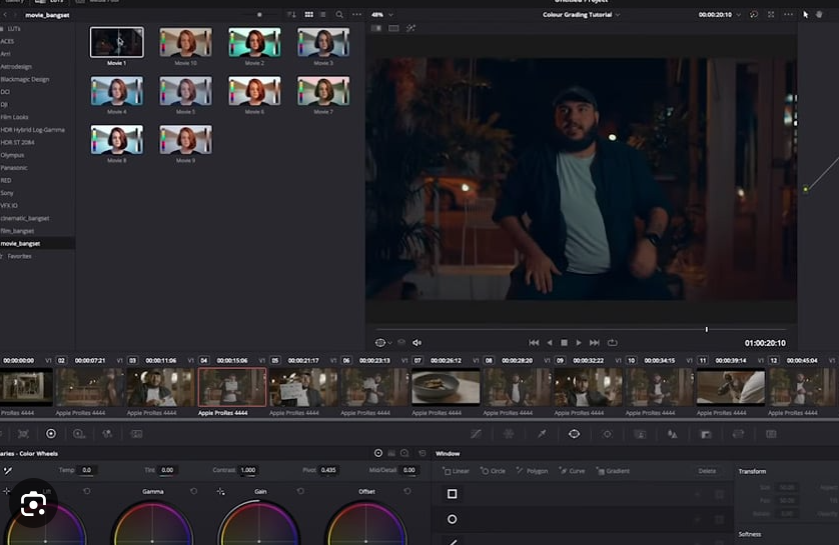Tripod Brixton,
Lambeth Town Hall,
1 Brixton Hill, London,
SW2 1RW
Hours: Monday to Friday, 8am – 7pm
Phone: 020 7580 7333
 Colour grading is one of the last steps in post-production, giving the final product (a film, advert or music video) some more life to it. Through colour grading the colour of the images is enhanced accordingly to the brief and expectations of the director.
Colour grading is one of the last steps in post-production, giving the final product (a film, advert or music video) some more life to it. Through colour grading the colour of the images is enhanced accordingly to the brief and expectations of the director.
Adjusting the colours during this editing process is also used to add a dramatic effect in film and photography. Colour grading can be used for artistic purposes to match the brief defining the emotion, style, and mood of the film.
Colour is used as a tool to help with the storytelling, therefore is a very important step during a project.
If you’re looking to hire a Colour Grader then please call us on 020 7580 7333 or email us on info@yellowcat.london.
What is a Colour Grader?
A Colour Grader is the person in charge of giving the final project a specific style through colour. After the footage is filmed, edited and colour corrected, the Colour Grader will work on it.
They work closely with the director and cinematographer, ensuring their vision is being achieved. Colour Graders usually work in colour suites, which tend to be neutral spaces and have good lighting in order to create an accurate grading.
Some of the adjustments a Colour Grader makes to a film include saturation, luminance, colour, white balance, black level, and contrast.
What are the key responsibilities of a Colour Grader?
Here are the Colour Grader’s main responsibilities:
What skills and software do Colour Graders need?
Working as a Colour Grader requires a set of technical skills and a good knowledge of the software used to Colour Grade. Here are some:
How to become a Colour Grader?
You won’t need a degree in film or colour grading to become a Colour Grader. It would help, of course, but don’t feel discouraged because as long as you learn the necessary skills you can become one!
Starting in a post-production house as an assistant can be a way to get into colour garding, many places offer entry-level jobs that allow less experienced people learn and develop their careers. You will also have access to the best software instead of investing in your own, which can be expensive!
However, if you do want to invest then it would also be a good way of mastering these software and gaining experience that will prepare you for the future. Doing courses and learning about colour is also beneficial as you will need to use different techniques when it comes to storytelling.
Most importantly, work on your portfolio. Building a strong portfolio is key in this industry, it is what will showcase how good your work is and what will catch the attention of employers/clients.
Lastly, building relationships will give you a chance to get more work in the future. Connect with everyone you have worked with and keep a good relationship with them, so when they need a Colour Grader they will think of you!
If you’d like help breaking into the industry, contact us for the latest job openings, advice on becoming a freelancer and CV support.
Tripod Brixton,
Lambeth Town Hall,
1 Brixton Hill, London,
SW2 1RW
Hours: Mon to Fri, 8am – 7pm
Phone: 020 7580 7333
Tripod Brixton,
Lambeth Town Hall,
1 Brixton Hill, London,
SW2 1RW
Hours: Monday to Friday, 8am – 7pm
Phone: 020 7580 7333